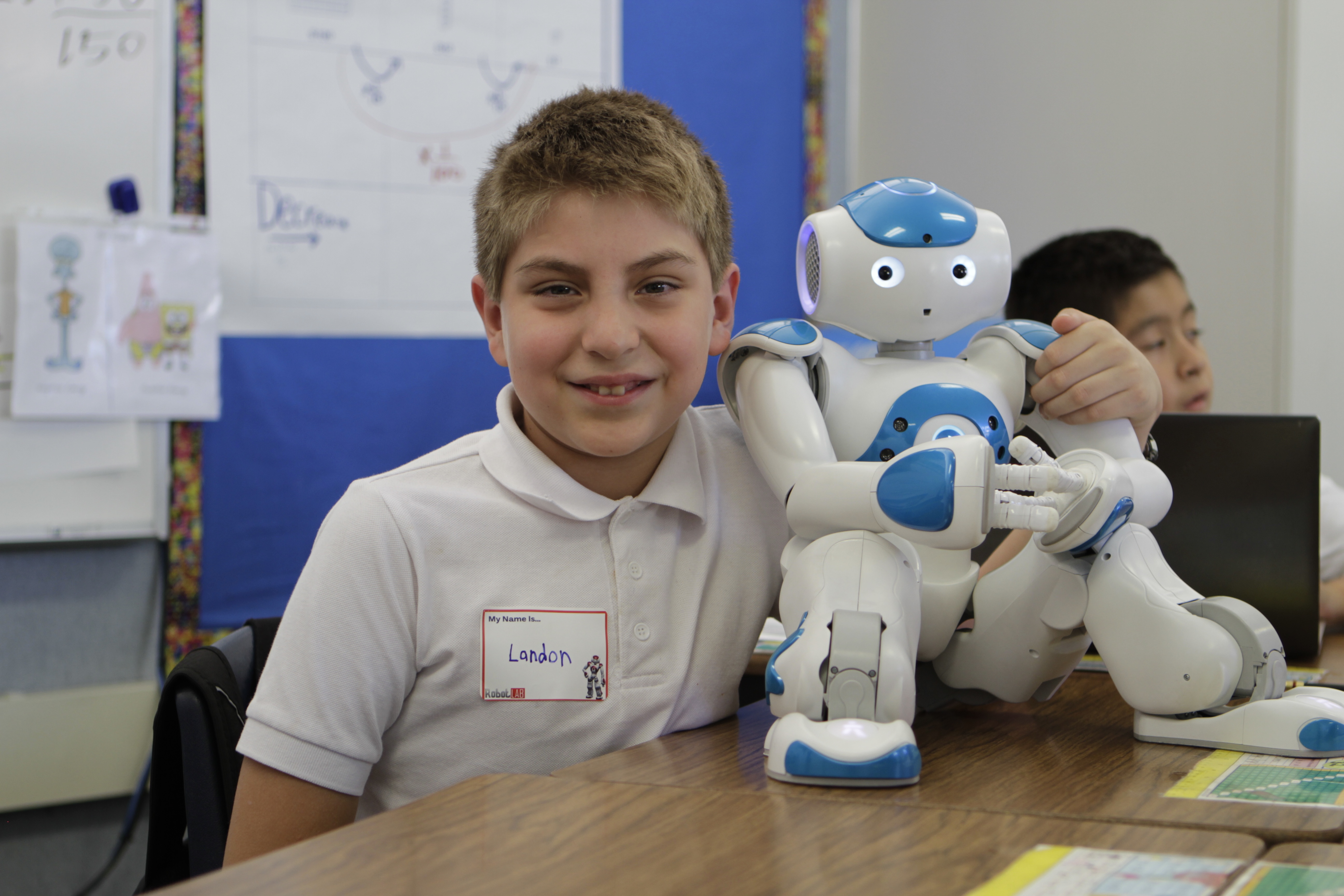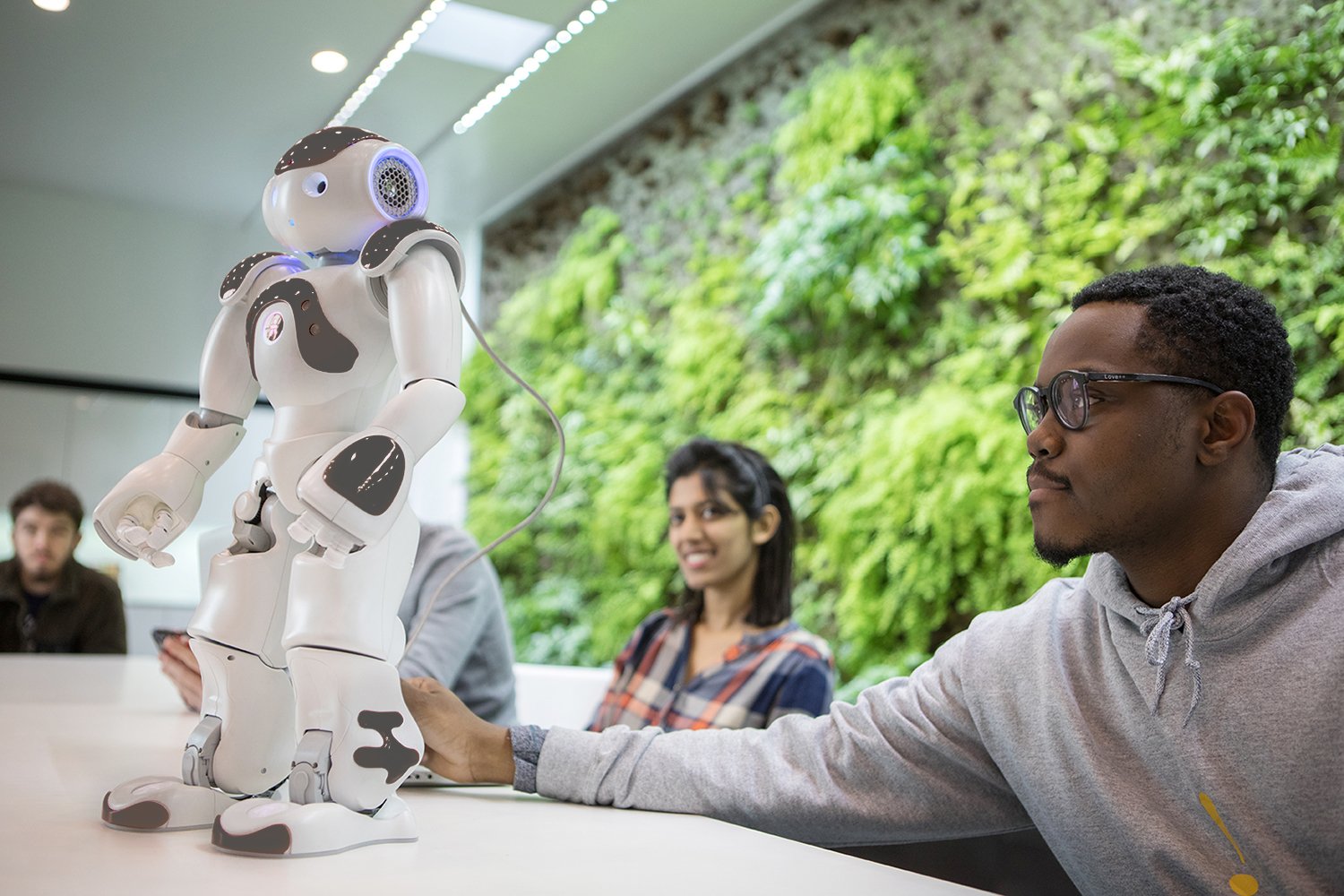RobotLAB Blog
Everything You Need To Know About Robotics in Businesses
Using Gamification to Ignite Student Learning

Gamification taps into the power of non-competitive play and students’ desire to improve their skills.
- 0 Comments
- Dec 16, 2021 10:00:00 AM
- Posted by Maria Alejandra Calcetero
- Topics: Robotics, EdTech, STEM, Education, code, 21st Century Classroom, Special Education, Artificial Intelligence, data literacy, Coding, Robots,, students, programming, Technology, VR, Realidad Virtual, STEMchat, Edchat, AI, k12, Virtual Reality, virtual learning, classroom, Inteligencia Artificial, Literacy, STEM literacy
The Power in STEM Internships
By Dan Matthews
 Photo by Jeswin Thomas on Unsplash
Photo by Jeswin Thomas on Unsplash
As students move into science, technology, engineering, and math (STEM) higher education, it’s important to understand their learning experiences need to be more diverse. STEM internships are a good tool in this regard. When students can make connections with industries, mentors, and practices this can boost the outcomes of their education in a variety of areas. As their course tutor, you have a role to play in facilitating and supporting these internships while they’re still at school.
We’re going to review why STEM internships can be a powerful tool, along with some of the ways you can help set your students on a positive path.
- 0 Comments
- Dec 15, 2021 10:00:00 AM
- Posted by Maria Alejandra Calcetero
- Topics: Robotics, EdTech, STEM, Education, code, 21st Century Classroom, Special Education, Artificial Intelligence, data literacy, Coding, Robots,, students, programming, Technology, VR, Realidad Virtual, STEMchat, Edchat, AI, k12, Virtual Reality, virtual learning, classroom, Inteligencia Artificial, Literacy, STEM literacy
Teaching Data Visualization to STEM Students
By Devin Partida

There’s no denying that our world is becoming more data-driven, and trying to teach young students the importance of understanding critical information is more important than ever before.
Aside from building critical thinking skills, students can benefit from STEM topics (science, technology, math, and engineering), which rely heavily on data and analytics. Setting kids up for success early on in their academic careers is vital.
K-12 educators have their work cut out for them trying to teach their students about data visualization. Here’s why it’s important to teach young students and some tips for teachers who need to cover this in their classrooms.
- 0 Comments
- Dec 14, 2021 10:00:00 AM
- Posted by Maria Alejandra Calcetero
- Topics: Robotics, EdTech, STEM, Education, code, 21st Century Classroom, Special Education, Artificial Intelligence, data literacy, Coding, Robots,, students, programming, Technology, VR, Realidad Virtual, STEMchat, Edchat, AI, k12, Virtual Reality, virtual learning, classroom, Inteligencia Artificial, Literacy, STEM literacy
Are Robots a Real Threat to Teachers in the Future?
By Tiffany Harper

People have long been fascinated by how robots work. And as technology is improving, it also offers new development opportunities for the robotics industry. There are already robots that are considered the future of logistics, while others are used to welcome and greet patients at many hospitals.
But according to reliable services, robots could make their entry into the educational domain too. And this is because the field of artificial intelligence is so deeply intertwined with that of robotics. Even though many educators and teachers do not see this as a plausible option, recent studies and technological advancements contradict this view.
The more the technology is advancing, the greater support it can offer to teachers and educators around the world. But can robots be good teachers? One can’t help but admit that human touch is always needed in the relationship between teachers and students. But can robots come with this human touch? Can they be great teachers?
- 0 Comments
- Dec 1, 2021 10:00:00 AM
- Posted by Maria Alejandra Calcetero
- Topics: Robotics, EdTech, STEM, Education, code, 21st Century Classroom, Special Education, Artificial Intelligence, data literacy, Coding, Robots,, students, programming, Technology, VR, Realidad Virtual, STEMchat, Edchat, AI, k12, Virtual Reality, virtual learning, classroom, Inteligencia Artificial, Literacy, STEM literacy
4 Ways a STEAM-centered Curriculum is Critical to Youth Education

Purposefully designing STEAM programming can make fields such as computing, AI, and space exploration interesting and approachable for youth.
- 0 Comments
- Nov 30, 2021 10:00:00 AM
- Posted by Maria Alejandra Calcetero
- Topics: Robotics, EdTech, STEM, Education, code, 21st Century Classroom, Special Education, Artificial Intelligence, data literacy, Coding, Robots,, students, programming, Technology, VR, Realidad Virtual, STEMchat, Edchat, AI, k12, Virtual Reality, virtual learning, classroom, Inteligencia Artificial, Literacy, STEM literacy
Importance Of Hands-On Experience During Academic Journey
By Stella Lincoln
 Image source by Unsplash
Image source by Unsplash
Why do companies mostly prefer experienced candidates over freshies? What do freshies lack that experienced candidates do not? This is what we call hands-on experience.
Education is not only about getting to know or having information about something. It's about experiencing a particular thing that you have learned. This is the reason universities and institutes often ask us to submit semester projects and final year projects so that we can practically apply what we have learned. Just like, e-learning is better than traditional learning, practical education is better than theoretical study.
In order to implement practical learning, the STEM education system is spreading all across the globe.
- 1 Comments
- Nov 24, 2021 10:00:00 AM
- Posted by Maria Alejandra Calcetero
- Topics: Robotics, EdTech, STEM, Education, code, 21st Century Classroom, Special Education, Artificial Intelligence, data literacy, Coding, Robots,, students, programming, Technology, VR, Realidad Virtual, STEMchat, Edchat, AI, k12, Virtual Reality, virtual learning, classroom, Inteligencia Artificial, Literacy, STEM literacy
15 Ways to Teach students to Solve Math Problems That Require Math Facts
Are you looking for ways to teach students to solve math problems that require math facts? If so, keep reading.
- 0 Comments
- Nov 23, 2021 10:00:00 AM
- Posted by Maria Alejandra Calcetero
- Topics: Robotics, EdTech, STEM, Education, code, 21st Century Classroom, Special Education, Artificial Intelligence, data literacy, Coding, Robots,, students, programming, Technology, VR, Realidad Virtual, STEMchat, Edchat, AI, k12, Virtual Reality, virtual learning, classroom, Inteligencia Artificial, Literacy, STEM literacy
Why All Students Must Be Given Equal Access to STEM Classes
By Dan Matthews
Robust STEM education makes students more employable and equips them with the skills necessary to succeed in an ever-changing world. In addition, the US Bureau of Labor Statistics reports that those working in STEM fields earn an annual median salary of $89,780 - that’s $49,760 more than those working in non-STEM fields.
- 0 Comments
- Nov 22, 2021 10:00:00 AM
- Posted by Maria Alejandra Calcetero
- Topics: Robotics, EdTech, STEM, Education, code, 21st Century Classroom, Special Education, Artificial Intelligence, data literacy, Coding, Robots,, students, programming, Technology, VR, Realidad Virtual, STEMchat, Edchat, AI, k12, Virtual Reality, virtual learning, classroom, Inteligencia Artificial, Literacy, STEM literacy
8 Signs that a Career in Technology Might Be Right for a Student
By Shawn Mack
 Photo by javier trueba on Unsplash
Photo by javier trueba on Unsplash
Since the invention of the vacuum tube computers, the world has only been moving forward in terms of tech. With every passing day, innovative minds are coming up with solutions to the challenges they face every day. Today, nothing is an obstacle anymore. Everything is doable.
Perhaps, this explains why the tech industry is expected to touch about of market value by the end of this very year. The current growth rate of the industry is about 4.2 percent, which is only expected to grow in the coming years. Overall, employment in computer and information technology will witness from 2020 to 2030, which will add up to about 667600 newer job opportunities.
- 0 Comments
- Nov 18, 2021 10:00:00 AM
- Posted by Maria Alejandra Calcetero
- Topics: Robotics, EdTech, STEM, Education, code, 21st Century Classroom, Special Education, Artificial Intelligence, data literacy, Coding, Robots,, students, programming, Technology, VR, Realidad Virtual, STEMchat, Edchat, AI, k12, Virtual Reality, virtual learning, classroom, Inteligencia Artificial, Literacy, STEM literacy
7 STEM Careers Kids Can Explore
 Photo by Marisa Howenstine on Unsplash
Photo by Marisa Howenstine on Unsplash
Is your child interested in exploring a STEM-related career? Check out these 7 career paths that involve science, technology, engineering, or math, and find one that suits your child's interests.
- 0 Comments
- Nov 16, 2021 10:00:00 AM
- Posted by Maria Alejandra Calcetero
- Topics: Robotics, EdTech, STEM, Education, code, 21st Century Classroom, Special Education, Artificial Intelligence, data literacy, Coding, Robots,, students, programming, Technology, VR, Realidad Virtual, STEMchat, Edchat, AI, k12, Virtual Reality, virtual learning, classroom, Inteligencia Artificial, Literacy, STEM literacy
Relevant Posts
- Augmented Reality: A Tool for Teaching Students Robot Programming
- Fostering Innovation Through Youth Education in STEM and EdTech
- How Parents Can Foster STEM Learning Beyond the Classroom
- How Robotics Cultivates a Deep Understanding of Mathematics in Students
- RobotLAB Receives EDTech Chronicle 2023 ‘BESTIE’ Award for Landmark Partnership with American Samoa Dept. of Education.
Subscribe to Email Updates
-
I Want To Learn MoreADDITIONAL INFORMATION


